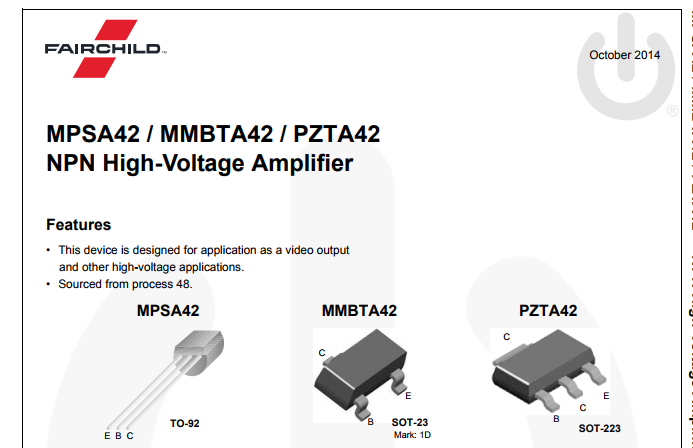-
Posts
765 -
Joined
-
Last visited
Content Type
Profiles
Forums
Events
Everything posted by sorenb
-
So you have 24VAC 100VA connected to a GRLV configured for 24VDC, and have less than 3VDC drop, while the transformer secondaries are at 24VAC? numbers doesn't seem to add up - at least 3-5V is missing as far as I can see: 24VAC*1,4VDC/VAC - 3VDC (regulation drop) - 2VDC (diode drop) - Load_drop = 24VDC => Load_drop ~ 3-5V
-
No, didn't care to get excatly 24V ... got 23.6V from the resistors I had at hand Yes, the diodes are fully lit hence the regulation comment
-
23.6VDC 2.1A, regulation when Vce>3V
-
As you can see from my previous post (edited to include transformer information), I was able to pull 4.2A at 20V without any problems (had a scope on the output). I suggest you measure the actual input pins of the OpAmp and pin6 at the lt1021, to verify all those are at 10V when you experience the output is sagging. If that is ok Check if you have >4V Vce across the pass transistor (for my experience it works already at 3V when the current is 1A)
-
"could not maintain regulation" meaning what exactly? (edit after adding the transformer info to the previousposting) You probably want to check the voltages in the input pins of the OpAmp (directly on the OpAmp) against the pin6 at the LT1021, when you experience the regulation doesn't work
-
did a load test of a stock GRLV configured for +/-20V, using a lab supply as source . Unloaded 20.0556V out, and at 4.25A it drops to 20.0333V - caused by the resistance of the trace (between sensing resistor and terminal block) itself. Seems to be stable regulating as long as the voltage drop across the pass transistor is > 3V (Kevin recommends > 4V though). Also going above 1.5A one might benefit from upping the current to the driver transistor (Kevin mention this earlier in this thread) and using larger caps. The largest I can find that fits is this https://www.mouser.dk/Passive-Components/Capacitors/Aluminum-Electrolytic-Capacitors/Aluminum-Electrolytic-Capacitors-Snap-In/_/N-75hr0?P=1z0j7l0Z1z0x3saZ1yx4awyZ1yx4atvZ1ypb2ikZ1z0vn3sZ1z0wqdeZ1z0wqf4 Using a 24VAC 100VA transformer, I get almost the same. At 4.2A the regulation drops at 4.2V Vce (21.6VAC input). Seems like > 4V (as Kevin has stated earlier) is what is need when < 1.5A, and more like 7v if approaching 4A (and raising the current for the driver)
-
the resistor you are holding in your hand, is that either R9 or R10 then or?
-
it's a bit "odd" that you have -3.23V across the R9 (2k) (meaning 1.6mA), and at the same time 10V across R10 (1k5) (meaning 6.7mA) , so where does the remainder 5.1mA go? C3 as Kevin points to seems to be a reasonable guess ...provided that the 1Megs resistors are correct (which it seems from your pics), or the OpAmp itself ...
-
check Q11
-
What voltage do you have before regulation? what is the voltage at OpAmp pin3/pin2, 10V? did you check that you haven't by accident swapped a KSP42 for KSP92 ?
-
a42's ...would be my first attempt, and the tail resistor + trimmer ...removed the old solder using wick, and re-solder while being careful not to use too much
-
hard to say what is going on, 100ohms is what I am using for 20mA ....from what you report, I'd suggest you go through the soldering....if you have been a bit to generous with the solder, it might hide a bad joint or two ....use some wick, and be careful not to use too much solder ...maybe the A42's (just guessing) OP27A is ony used if you engage the servo
-
dial the trim to around middle, if you have -300V in both O+ and O- and cannot dial in against zero with the offset trimmer, you might raise the tail resistor , if you have 100-120ohms in that position, you might try 150ohms rather, if you already have 150ohms...try 200ohms, you get the drift Also, check the other channel, if that channel is in balance, you might check if you got all the resistor values right
-
@Blueman2 check the balance offset if the pot is dialed near one of the extreme,s you might have a minor fault somewhere later in the chain , e.g. bad joint or something similar ...
-
@Craig Sawyers: @Blueman2 is rather asking for any benefit finding a DAC with bal out rather than SE. I'd say it boils down to how the DAC is creating the balanced signal, which might be difficult to determine if no inside pics or schematic is available from the specific DAC. That said, it might be of higher importance that he likes the sonic signature of the DAC rahter than focus on the DAC being SE og Bal.
-
Brexit is a reality ...
-
first "All Triode" ... a bit humble, but never the less, described the main idea, ... a breakout to the pacific and Blue Hawaii came to life, sometimes wonder if the place of birth had been Burger King, the amp would have been "Whopper Cheese" as James McLamore thought it conveyed "imagery of something big" ... then a bit more bold: KGSS: "Kevin Gilmore Solid State" , humming along same convention came the KGSShv the creator soon realized that the mini panels preferred by the baker didn't had enough real estate for the trend of adding letters for every bright idea ....Megatron was a bold stand up against Disney, although the pupils of Walt soon realized that the best thing to do, was not to do anything ... one knows Darth Wader when he comes around! ...being the Che Guevara of electrostatic amplification can be a bit challenging at times although having high potential, so a short re-visit to the old scheme, and the Kevin Gilmore Single Triode (KGST) was a reality , but sadly didn't really take off .... the hole thing started as means of creating the best for the SR-007 ... my name is Bond ...Carbon ....feeling dizzy? confused? everything going in circles? and the Circlotron was a reality ....I bet Q has a plan, anyways, it is about time that a proper amp is named: "Surströmming", as the taste is more delicious than the smell ...
-
-
link or context please
-
elevating resistors and caps are not needed on those boards, as the boards do not have any ground plane on top. (so the only resistor needed to be elevated is the power resistor on the PSU board). Probably easier to populate the SMDs and socket before resistors, as the resistor sort of get in your way now
-
if you lower the picth, aiming for A4 @ 432Hz, you'll have a perfect B2 pedal point ...might make a good contrast to the fluttering appearing a little later Anyways ...most likely the wiring harness around the output board that picks up the rectified mains or bad connections somewhere .... look at the schematic for the output board; the batteries, resistors (and the current limiter you have added) are supposed to be an integrated part hereof, meaning shortest possible wiring - maybe start with red and blue wires...
- 256 replies
-
- Circlotron
- High Voltage
-
(and 1 more)
Tagged with:
-
http://www.ti.com/lit/ds/symlink/cd4093b.pdf
-
zeners? ...really?
-

and now for something completely different part 3
sorenb replied to kevin gilmore's topic in Do It Yourself
one might do one/two unregluated PSU's, and feed it to each channel through some pairs of C5200/A1943 being controlled by one GRLV, like Kevin is doing in the Über -
...and does that also apply to second edition of the output board? ...wouldn't the sources be at -12V until the HV900 is applied?
- 256 replies
-
- Circlotron
- High Voltage
-
(and 1 more)
Tagged with:





